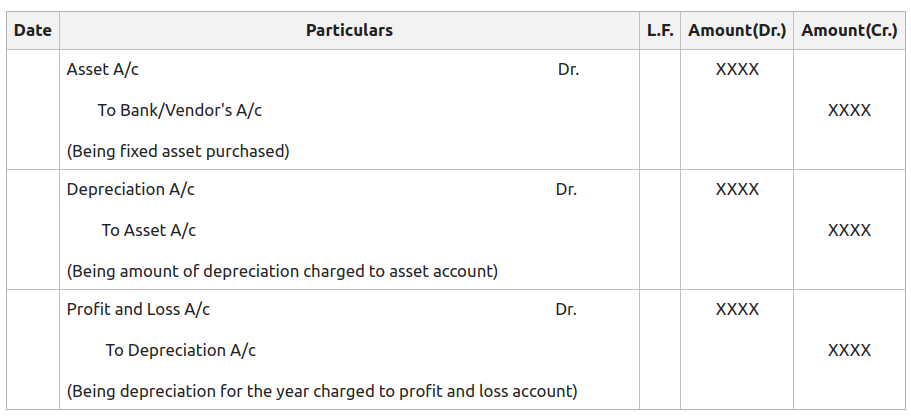PinCo Casino Sitesi: Kumar ve Spor Bahisleri
June 18, 2024DATEMPIRE REVIEW: YOUR BEST REVIEW TO ONLINE WEB DATING
June 21, 2024
To put it simply, accumulated depreciation represents the overall amount of depreciation for a company’s assets, while depreciation expense refers to the amount that has been depreciated in a specific period. Depreciation is an accounting entry that reflects the gradual reduction of an asset’s cost over its useful life. With the declining balance method, depreciation is recorded as a percentage of the asset’s current book value. Because the same percentage is used every year while the current book value decreases, the amount of depreciation decreases each year. Even though the total accumulated depreciation will increase, the amount of accumulated depreciation per year will decrease. Accumulated depreciation is the total amount of depreciation expense recorded for an asset on a company’s balance sheet.
- The various methods used to calculate depreciation include straight line, declining balance, sum-of-the-years’ digits, and units of production, as explained below.
- Because the same percentage is used every year while the current book value decreases, the amount of depreciation decreases each year.
- Accumulated depreciation totals depreciation expense since the asset has been in use.
- CFI is the global institution behind the financial modeling and valuation analyst FMVA® Designation.
Units of Production Method

Each period, the depreciation expense recorded in that period is added to the beginning accumulated depreciation balance. An asset’s carrying value on the balance sheet is the difference between its historical cost and accumulated depreciation. At the end of an asset’s useful life, its carrying value on the balance sheet will match its salvage value. The balance rolls year-over-year, while nominal accounts like depreciation expense are closed out at year end.
Additional Resources
In other words, accumulated depreciation is a contra-asset account, meaning it offsets the value of the asset that it is depreciating. As a result, accumulated depreciation is a negative balance reported on the balance sheet under the long-term assets section. The accumulated depreciation account is a contra-asset account on a company’s balance sheet.
Debiting Accumulated Depreciation
Any gain or loss above or below the estimated salvage value would be recorded, and there would no longer be any carrying value under the fixed asset line of the balance sheet. For example, if a company buys a vehicle for $30,000 and plans to use it for the next five years, the depreciation expense would be divided over five years at $6,000 per year. Each year, depreciation expense is debited for $6,000 and the fixed asset accumulation account is credited for $6,000. Depreciation is the gradual charging to expense of an asset’s cost over its expected useful life. The use of a depreciation method allows a company to expense the cost of an asset over time while also reducing the carrying value of the asset. Initially, most fixed assets are purchased with credit which also allows for payment over time.
The net difference or remaining amount that has yet to be depreciated is the asset’s net book value. After three years, the company records an asset impairment charge of $200,000 against the asset. This means that the asset’s net book value is $500,000 (calculated as $1,000,000 purchase price – $200,000 impairment charge – $300,000 accumulated depreciation). Accumulated depreciation is a contra asset that reduces the book value of an asset. Assume that a company purchased a delivery vehicle for $50,000 and determined that the depreciation expense should be $9,000 for 5 years. Therefore, after three years the balance in Accumulated Depreciation will be a credit balance of $27,000 and the vehicle’s book value will be $23,000 ($50,000 minus $27,000).
Straight-Line Method
The original cost of the asset is known as its gross cost, while the original cost of the asset less the amount of accumulated depreciation and any impairment charges is known as its net cost or carrying amount. Accumulated amortization and accumulated depletion work in the same way as accumulated depreciation; they are all contra-asset accounts. For tangible assets such as property or plant and equipment, it is referred to as depreciation. Otherwise, only presenting a net book value figure might mislead readers into believing that a business has never invested substantial amounts in fixed assets. The balance sheet would reflect the fixed asset’s original price and the total of accumulated depreciation. Tracking the depreciation expense of an asset is important for reporting purposes because it spreads the cost of the asset over the time it’s in use.
For the past 52 years, Harold Averkamp (CPA, MBA) has worked as an accounting supervisor, manager, consultant, university instructor, and innovator in teaching accounting online. Upgrading to a paid what does the credit balance in the accumulated depreciation account represent membership gives you access to our extensive collection of plug-and-play Templates designed to power your performance—as well as CFI’s full course catalog and accredited Certification Programs.
This would continue each year until the amount of the deduction is less than or equal to the amount that would be obtained using the straight-line method, at which point it switches over to that method. So in this example, the declining balance method would only be advantageous for the first year. To see how the calculations work, let’s use the earlier example of the company that buys equipment for $25,000, sets the salvage value at $2,000 and the useful life at five years. It is important to note that an asset’s book value does not indicate the vehicle’s market value since depreciation is merely an allocation technique. The truck has an estimated useful life of 5 years and a residual value of $10,000.

